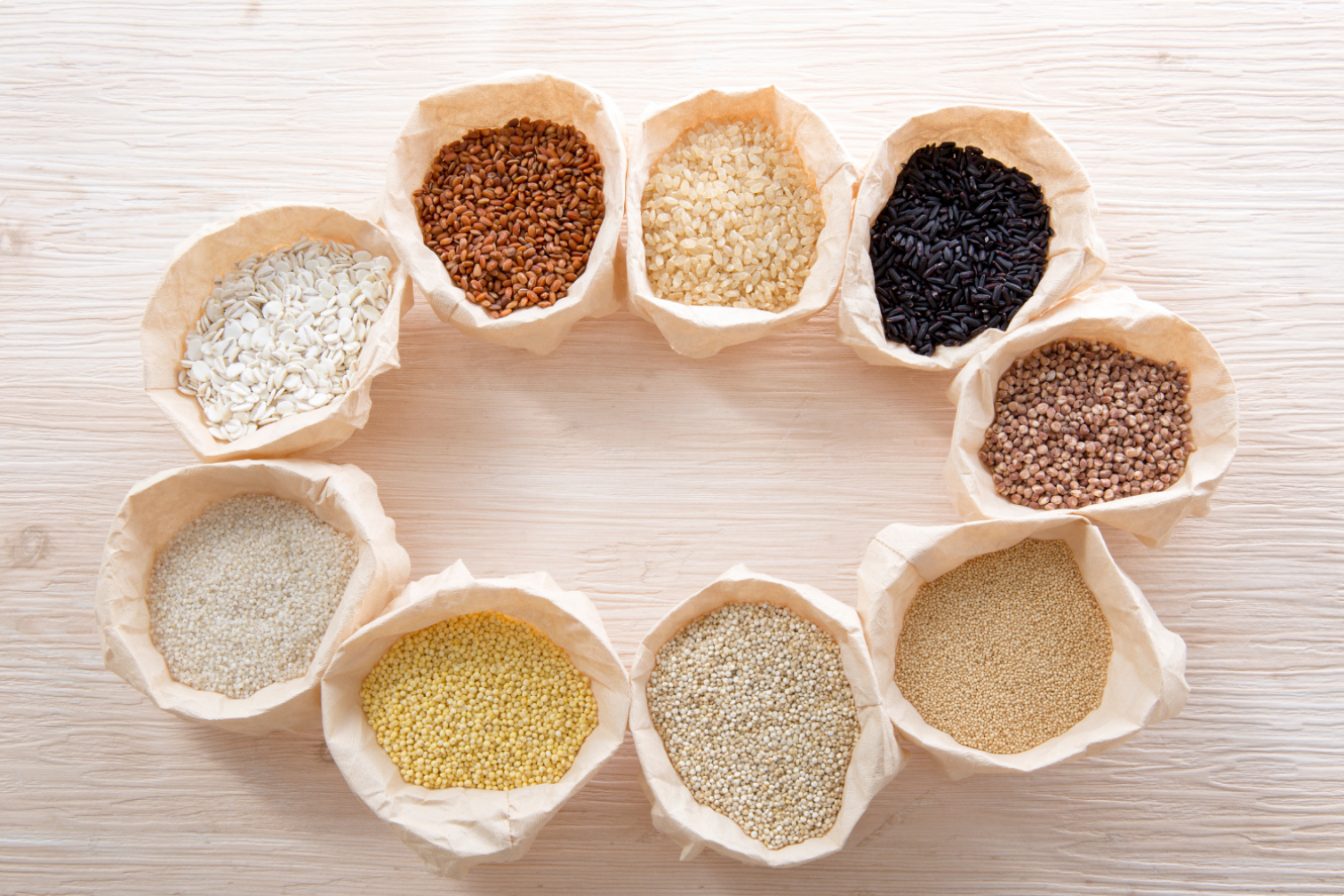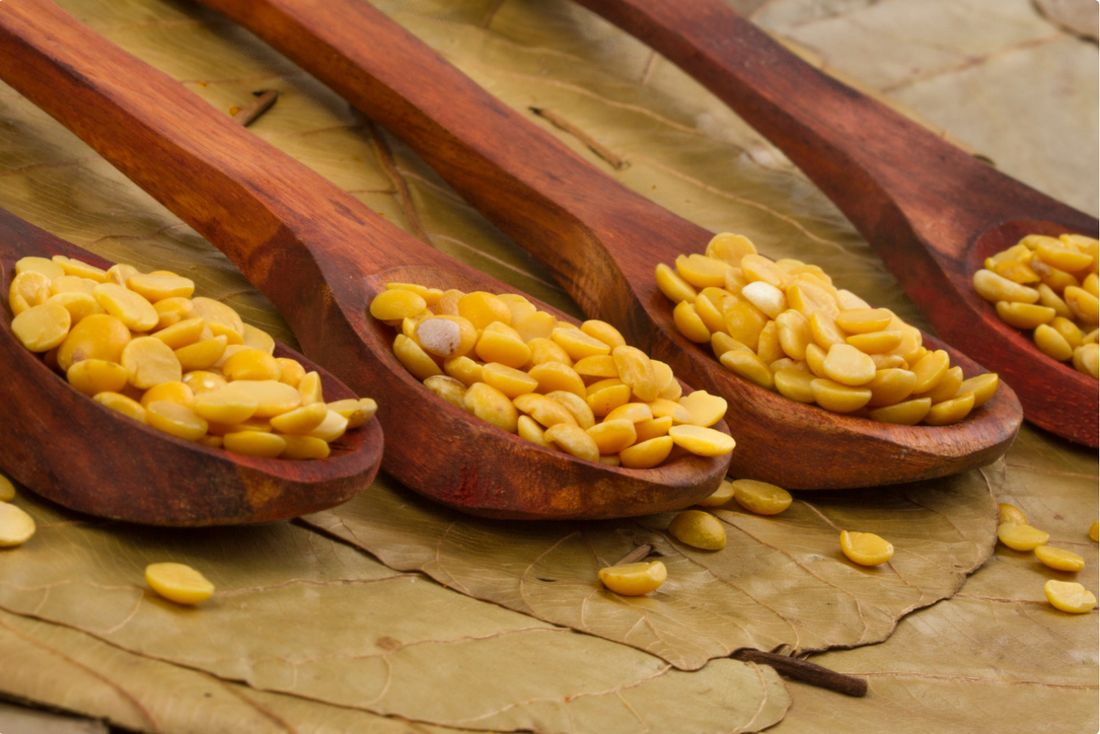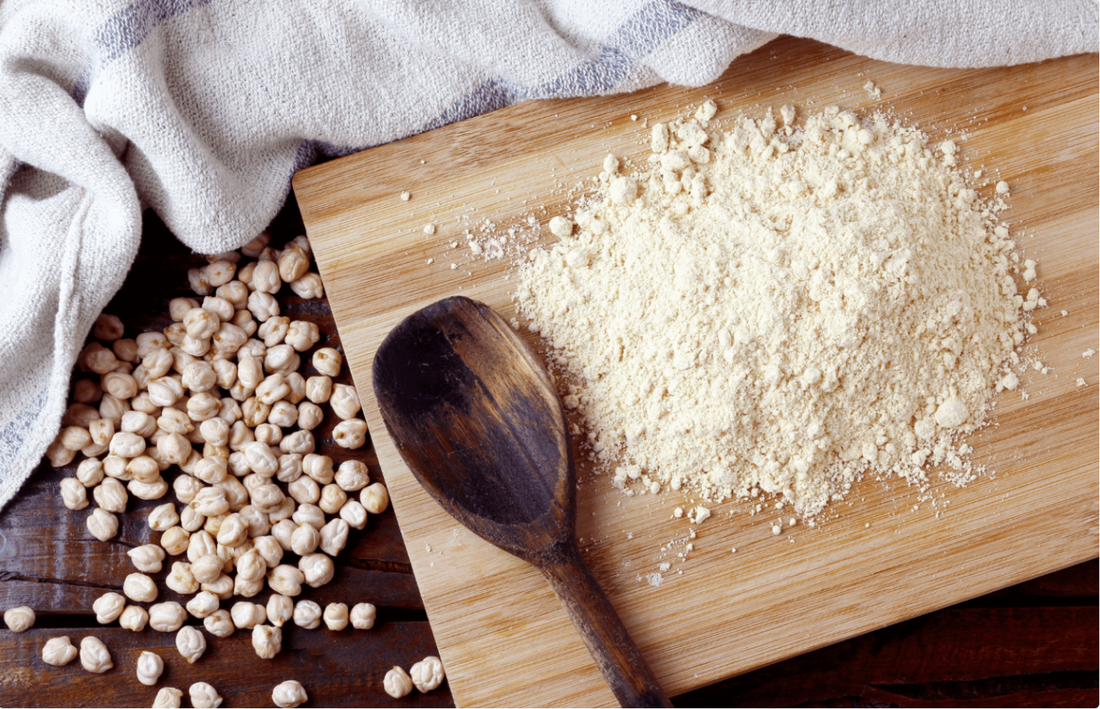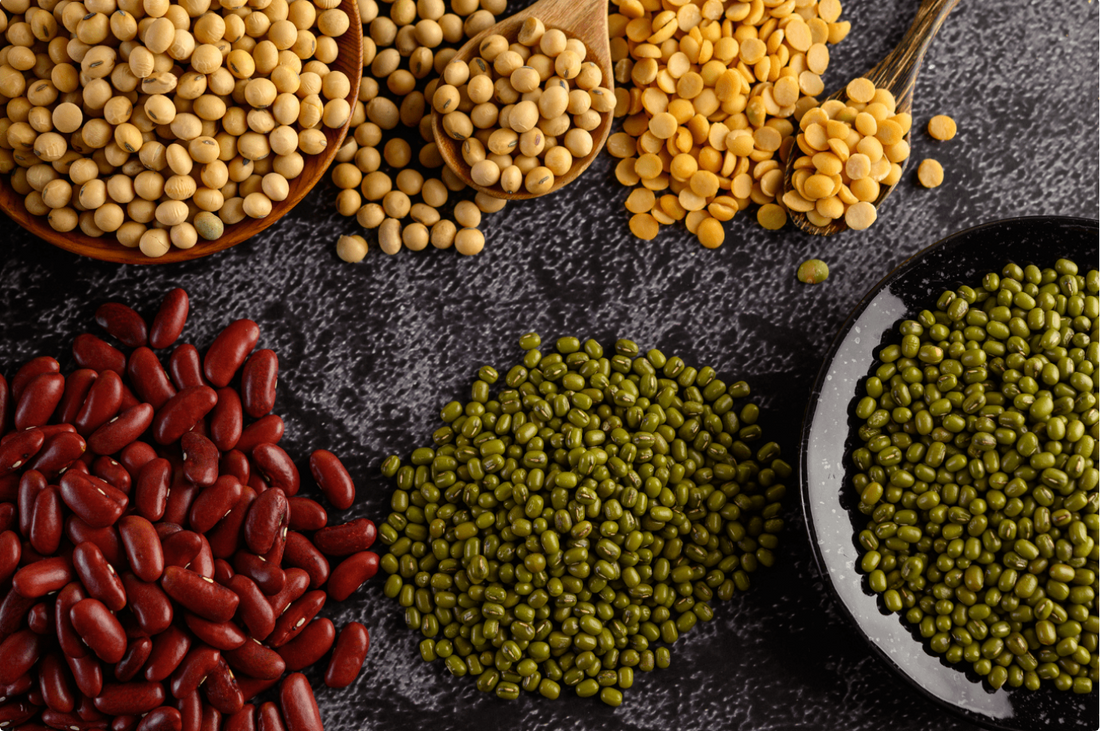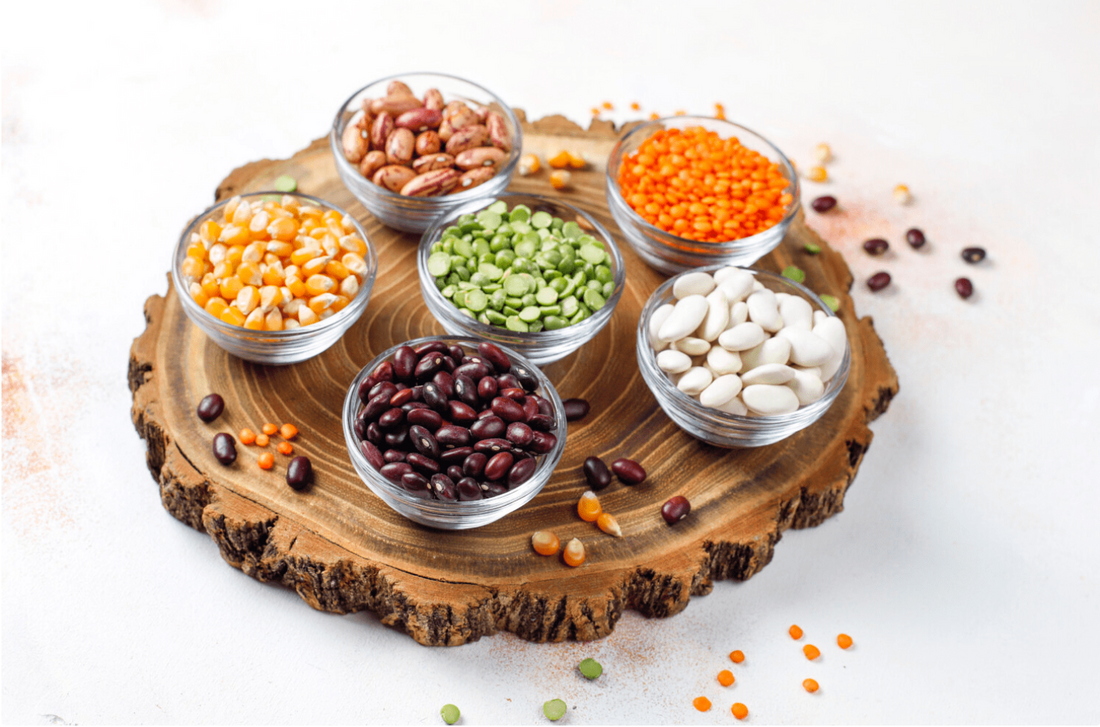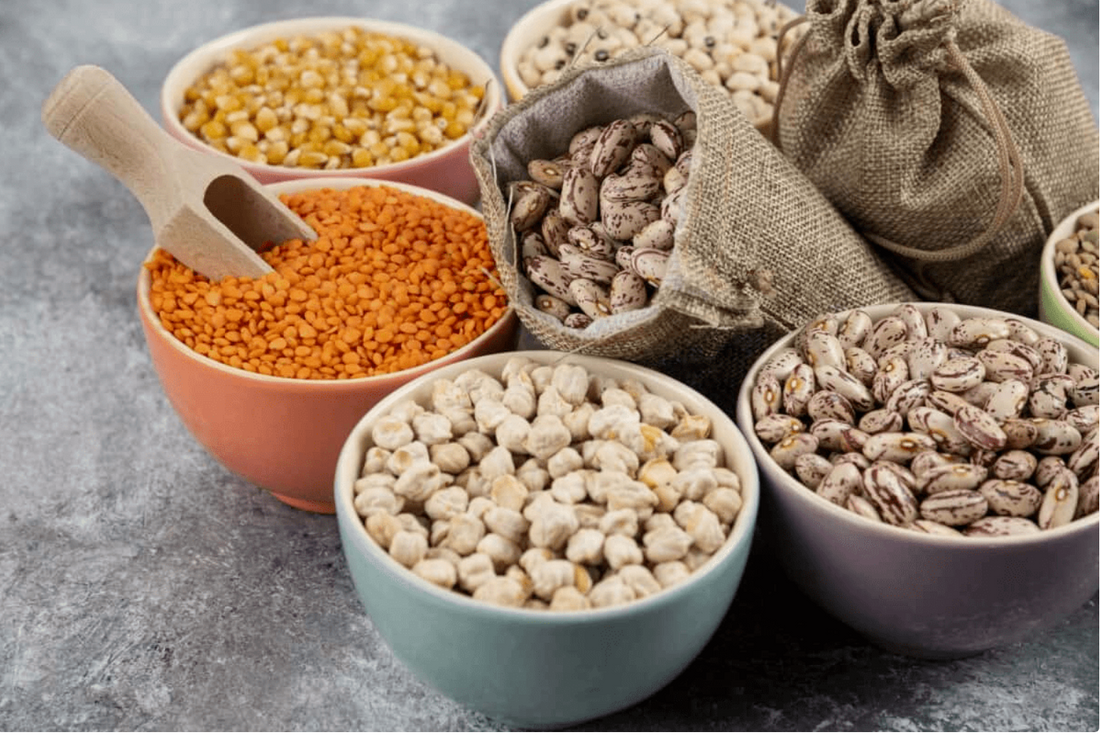Articles
The Incredible Tur Dal: Obtain Quality Health Benefits At A Lower Cost
A piping hot bowl of wholesome dal not just warms the tummy, but benefits the heart and the overall health as well. Pigeon Peas or Tur Dal, Tur Dal as it is commonly known, is a quintessential staple across cultures in our country. Tur Dal features in various forms in Indian cooking. It is a storehouse of quality plant protein replete with multiple health benefits. Each state in India has its unique preparation that is absolutely lip – smacking and hence tur dal is a hearty essential in every meal! A brief history: Tur dal is a legume that belongs to the Fabaceae family and traces its roots to the Indian subcontinent at least 3500 years ago. Does it sound surprising that lentils had then traveled to Asia, Africa and Latin America and then were discovered by the Europeans? Today, Tur Dal is widely cultivated in most tropical and semitropical regions across the world; our country accounts for over 70 percent of the total production of tur dal. It is a drought-resistant crop and can easily be cultivated in regions with less rainfall. We have already talked about how Tur Dal carries out symbiosis with Rhizobia , the bacteria that help with nitrogen fixation of the soil in one of our previous blogs. There has been a discovery of path-breaking technology that can enhance the nutrient value of the grain as well reduce its cooking time. Why is Tur Dal cultivation popular? In India, this legume is cultivated as an annual crop, and it is the second most important pulse in our country in terms of production and consumption. It is grown extensively in Maharashtra, Andhra Pradesh and Gujarat. The Arhar or the Tur crop requires about 600-650 mm of rainfall in the first 8 weeks and drier conditions during the flowering and pod development stage. It needs moist and warm weather during germination and lower temperature during the vegetation growth phase. Waterlogging, heavy rains, and frost are harmful and can damage the crop. This crop is drought-tolerant because of its deep tap root structure. It grows well on all soil types, but sand-loam to loam is ideal. Traditionally the crop is intercropped with cereals, oilseeds, and other short-duration legumes. Climatic conditions prevalent in our country coupled with agricultural prerequisites to cultivate tur dal are favorable to our farmers; let us also not ignore that this legume is packed with health benefits and hence is widely in demand too. Where else is there a crop that protects the soil after harvesting? Tur Dal in our daily lives and its health benefits: Imagine the warm soup like tur dal spiced right, complete with a dollop of hot ghee, tempered with cumin seeds and cilantro leaves, served with piping hot rice. It reaches out directly to one’s soul and lifts spirits almost instantly. But is there all to it? There are a variety of dal preparations that are popular depending on the region it is used in. This unassuming protein-rich legume can assume the avatars of a rich north Indian Dal fry, a spicy south Indian Sambar, blends itself into spinach and turns into a protein powerhouse too! Remember always to rinse the tur dal in water and soak it for at least an hour before cooking. This helps in better absorption of nutrients in it and definitely quickens the pace of cooking it. Also, ensure that the tempering is always added in the end to enhance the flavor of the Tur Dal dish. Spend a little time understanding the quality of the Dal you purchase. High-quality Dal retains more nutritional value and has a better effect on health. Now, what are the health benefits of tur dal? Packed with protein:Tur dal is rich in good-quality protein, the building block of muscles, cartilage, and cells , which promotes repair and growth. Tur Dal combined with cereals delivers all essential amino acids that substantially serve the aforesaid objective. Protein consumption is critical to oxygenating cells in our body and plays a role in making enzymes that aid inthe digestion and absorption of food. Source of folic acid and Vitamin-B:Folic acid plays a key role during pregnancy; for the normal development of the baby and shields the baby against congenital birth defects of the brain and spinal cord. Tur Dal is packed with B complex vitamins vital for the normal metabolic process. Riboflavin influences metabolizing carbohydrates that prevent fat storage and enhances energy levels. Niacin in this legume has antioxidant effects that make the skin radiant and shields the skin from harmful UV rays. Rich in iron:Low hemoglobin levels can cause fatigue, irregular heartbeats, shortness of breath, and hair loss. Serious iron deficiencies can have more catastrophic effects on one’s health. Tur dal is a substantial source of plant-based iron and folic acid, and it pumps iron levels in the body naturally. It helps with weight management as it is a complex carbohydrate:Tur dal is intrinsically rich in protein and a source of complex carbohydrates, so it keeps one satiated for a longer time and controls hunger pangs. Since it is plant-based, it is also safe and highly suited for vegetarians. While the goodness of dietary fiber and a low glycaemic index helps in shedding weight by reducing the appetite, it triggers metabolism and reduces the intake of overall calories. Tur dal is low in saturated fats, and hence it is a super wholesome food for all weight watchers. Regulates blood pressure:Tur Dal or Pigeon pea is a good source of potassium that acts as a potent vasodilator or medicine that opens blood vessels. It, therefore, can regulate blood constriction and improves blood flow, thus keeping high blood pressure under control.Including Tur dal in the diet is highly recommended for hypertensive patients, as they are more susceptible tocardiovascular diseases. Improves gut health:Good gut health is a crucial indicator of overall well-being; digestive problems like bloating, indigestion and constipation are harmful and carry the risk of depleting essential nutrients from the system. in the needed amounts to the system. Tur dal is an effective digestive a stimulant that promotes overall digestion and improved gut health. Healthy for people with diabetes and boosts heart health:The Glycemic index of Tur dal is 29 making it highly suitable for diabetics. Since it is a good source of complex carbs and dietary fiber, it can boost metabolism and offer the body a steady energy supply. Just to note: foods low in GI keep one satiated for a longer time, delay digestion, and reduce blood sugar spikes. Since Tur dal is wholly devoid of saturated fats, it is a wise choice of protein for those with heart conditions. The abundance of dietary fibers and niacin helps enhance good HDL cholesterol levels and reduce harmful LDL cholesterol levels. Ultimately, there are fewer plaque deposits in the heart vessels, which eases cardiac muscle function and promotes overall heart wellness. Fortifies bones as it is rich in calcium, phosphorus, and magnesium:The consumption of tur dal is most important for growing children as it strengthens bones.It also plays a role in maintaining bone density in older people, bringing down the risk of osteoporosis. Magnesium is one of the key minerals actively involved in the execution of multiple bodily processes, uplifting both physical and mental well-being. Conclusion: To think of it, the affordable cost of tur dal, in fact, more than balances out the health. Do you agree? To buy Safe Harvest Pesticide Free Tur Dal – Safe Harvest Tur Dal
Learn moreHealth Benefits Of Pure Pesticide Free Besan Or Chickpea Flour.
Besan or gram flour is usually frowned upon by those who watch their weight; despite its role in the average Indian cuisine. Besan is no black sheep, for starters. Now it needs to be churned out into healthy recipes thereby enhancing its nutritive value. For those of us who merely associate Besan with pakoras (deep-fried fritters) or a sugar-rich halwa, it is about time we crawled from beneath the rock! Chickpea flour or Besan has a wide range of health benefits such as aiding in better digestion, improved immune system, and reduced risk of diseases. It is rich in protein, and folate and is packed with antioxidants, minerals, and vitamins; highly recommended to complete a balanced meal. It is a wise alternative to wheat flour as it is lower in carbohydrates yet richer in protein and fiber. Health benefits of Gram flour/Besan: Promotes satiety and weight loss: Gram flour combines both protein and fiber and has a low glycemic index all of which help feel full faster thereby reducing the portion of the meal. It is heart-friendly and has low cholesterol levels: A diet rich in non-soy legumes helps lower the total and LDL cholesterol levels thus making it ideal as a heart-friendly food. Food for good gut bacteria and bowel health: The beneficial bacteria which live in the large intestine is sustained by resistant starch found in gram flour. Now, these bacteria help protect the body from metabolic diseases, such as obesity, colon cancer, etc. High dietary fiber intake is associated with improved bowel movement, increased frequency, and easy bowel movement. Safe for Diabetics: The presence of fiber helps reduce the absorption of dietarycarbohydrates and hence it does not spike blood sugar levels. Gluten-free diet: Since chickpeas are a product of legumes; it is gluten-free. But one must ensure the purchase of a pure unadulterated product with less to no chances of cross-contamination from production or packaging equipment. Good in the prevention of Anemia: Gram flour is a great source of calcium and iron and plays a role in red blood cell production. Reduces Inflammation: Gram flour has butyrate, a short-chain fatty acid that reduces colon inflammation. It is also a great source of vitamin B that helps to increase immunity levels. Good for bone and brain health too: Gram flour has calcium and magnesium both of which helps in strengthening bones. Magnesium also relaxes blood vessels and allows more blood to flow into the brain. Besan is not just packed with nutritional values but it is one of the most effective home remedies for skin care. Besan face packs help tighten and lighten the skin while maintaining its elasticity. A spoon of gram flour mixed into a paste with milk and a dash of turmeric, and there your face pack is ready in a jiffy! Apply this to your face and neck, allow it to dry, and rinse off with plain water. Moisturise and there you are all set with glowing skin! Now, do you agree that Besan/gram flour should not be underrated anymore?
Learn moreFour Brothers And A Bullet: Four Most Common Types Of Pulses And Their Nutritional Facts
Pulses are a sub-category of the legume family, and the term “pulse” refers only to the dried seed of the plant. Dried beans, lentils, and peas are the most commonly known and consumed types of pulses; are versatile and can be included in a variety of meals. Pulses have a host of health and nutritional benefits; they contain high levels of protein and essential nutrients such as fiber, folate, calcium, iron, and vitamin C. Pulses can be stored for many months without losing their high nutritional value. Pulses are as good for soil health as they fix nitrogen and boost the productivity of farmlands in the long term. Many pulses promote higher rates of accumulation of soil carbon and have been used by farmers in intercropping for many centuries now. Let us now look at the following four main types of pulses and their nutritional facts. beans, chickpeas, lentils, and peas. Beans- Moong beans or green gram is a widely used pulse across cuisines and is delicious when soaked and cooked well. Rajma or kidney beans are another. Kidney beans have protein that can help expedite the muscle-building process. Overall, these beans help strengthen bones, keep the heart-healthy, and lower harmful cholesterol levels. They are also rich in fiber and can help improve digestion. What is more? They can be churned out into lip-smacking recipes across any cuisine. Chickpeas- Black and white chickpeas have a delicious nutty flavor and a starchy texture when cooked and are popular across India, Iran, Mexico, and Ethiopia. They are packed with nutrients, are protein-rich, and help in weight management. They help control blood sugar, are highly recommended for good bone health, help build red blood cells, and is packed with vitamin B6 which helps elevate brain functions. It is always important to soak chickpeas, for at least 8 hours before cooking them. Lentils- Who doesn’t like a humble Dal preparation? One of the most nutritious pulses provides a variety of health benefits and a splendid variety to choose from! They are an excellent source of protein, dietary fiber, and vitamin B and can protect the heart. Red split lentils are known to be a food to increase eyesight. Dals can be dry roasted, powdered, and made into Rotis/ pancakes as well. Peas- Black-eyes peas and garden peas are some popular varieties of peas. They are rich in dietary fiber and one of the best plant-based proteins. They are also a useful source of iron which is needed for making red blood cells and transporting oxygen around the body. Peas are also popular across cuisines. Above all, pulses are packed with a host of health benefits, inexpensive, easily available anywhere in the world, can be stored without a fuss, and are highly versatile. All one needs to be mindful about, is washing thoroughly, and soaking as needed before it is consumed. A selfless set of four brothers ( read 4 varieties of pulses) who bring along their powerful ammo anywhere and anytime for the larger good. (read nutritive value)! Shop Link – https://safeharvest.co.in/collections/pulses
Learn moreHealth Benefits of pulses you cannot ignore. Say hello to the powerhouses of Iron.
Yawning away on a crisp new morning? Does your usually shiny skin look pale all of a sudden? The chances are that you are anemic and might need an additional dose of iron supplements. Well, it is one of the most common deficiencies with research suggesting that almost 80 percent of people have it the world over especially women. Luckily it is the easiest to fix too. A generous dose of including pulses in your diet could be a good start! Did you know that the white bean has the richest content of iron among pulses? A cup of white beans serves up to 6 mg. Half a cup serving of lentils contains 3.30 mg. The benefit of consuming pulses does not stop here. Pulses can form a part of all your meals easily- Here is how. 1. They are healthy, filling, and nutrient-rich. Pulses and beans are high in protein, and low in fat, and due to the presence of a lot of fiber, they keep you full for a longer time too. A diet rich in pulses is a great way to eat less unhealthy saturated fat, manage your weight and keep your digestive system healthy. Pulses are also a very rich source of many vitamins and minerals such as iron, zinc, calcium, and magnesium. 2. Pulses are friendly on the pocket as well as sustainable for the environment. Pulses are easy to cultivate, do not require the addition of nitrogen-based fertilizers that usually harm the soil, and very less water. They help farmers adopt crop rotation, in the process making the occupation more profitable. Hence they become automatically pocket-friendly. 3. Chemical-free pulses can do wonders for your body. Organic pulses are of a higher quality and are packed with vitamins and minerals as they do not have any chemical additives that may interfere with these nutrients. The pulses taste better and be healthier when organically grown without pesticide use and the presence of high antioxidants gives you a better taste and flavor. 4. Make sure to soak your pulses overnight. Washing and soaking lentils enhance digestion and nutrition absorption as they can neutralize lectins and phytates present that can cause gas and bloating. Soaking lentils increase the mineral absorption rate of the body. An enzyme called phytase is activated when the dal soak and this helps in breaking down phytic acid and helps in binding calcium, iron, and zinc. This makes the absorption process much easier. Soaking also activates a compound called amylase that breaks down complex starch in lentils that help in easy digestion. You may soak and sprout legumes and beans (part of the pulse family) and include them along with fresh vegetables for a snack or a lunch salad. You can include in your lunch menu any kind of cuisine and well, as a thin dinner soup as well! As versatile as any meal with pulses and packed with a host of benefits- mostly importantly iron.
Learn moreBarnyard Millet: The Millet For Millennials
A majority of the millennials have taken to the healthy food revolution and are mindful about what they consume; concerned about how it affects their health and the environment. Traditional millets have found their way back into households quickly winning hearts with this smart generation for the all-around benefits it offers. The barnyard millet is a popular cereal or coarse grain with a very high nutritional value, versatility, and availability. The Barnyard millet or Sanwa rice as it is popularly known has high levels of protein, calcium, iron, minerals, and vitamin B complex. It is also low in carbohydrates and gluten-free, making it a boon for those with gluten allergies, type II diabetes, and cardiovascular diseases. The Barnyard millet has the lowest carbohydrate content, is gluten-free, and has the highest energy value amongst all the varieties of millets; hence a popular choice for the health-conscious millennial generation. The barnyard millet tastes similar to broken rice when cooked and is a rich substitute for rice. It is often advised to prepare millets in the form of porridge to obtain the maximum nutrients from this wonder-grain! Top health benefits of Barnyard Millet Low in calories :Barnyard millet is a good source of highly digestible protein and makes one feel light and energetic after consumption. A serving of barnyard millets (25g, raw) gives 75 calories and 1.5g of protein, 68 % carbohydrate, and less than 400 kcal/100 gms and is ideal for those who follow a diet. And no, Barnyard millet is not just a fasting millet; it is wholesome enough to be included in everyone’s daily meals across ages. Rich in dietary fiber : It is an excellent source of dietary fiber with a whopping 6.9gms per half a cup with a good balance of both soluble and insoluble fractions. The high fiber content in a meal helps in preventing constipation, excess gas, bloating, and unnecessary cramps caused. Low Glycemic Index : The carbohydrates in millets show a high degree of retrogradation of amylase, which facilitates the formation of higher amounts of resistant starch. Hence, it can be potentially recommended for patients with cardiovascular disease and diabetics as well. The barnyard millet improves carbohydrate tolerance among diabetics and plays in role in reducing blood sugar levels as well. Gluten-Free grain : Like all millets, the barnyard millet is appropriate for patients intolerant to gluten (those with celiac disease) or those who choose to follow a gluten-free lifestyle that eliminates wheat, barley, and other rye-based foods. The millet is easily available, quick to cook, and good to taste can easily become a wholesome alternative to rice, wheat, and other gluten-rich grains. Good Source of Iron : Some varieties of barnyard millet have been shown to contain high amounts of iron (18.6 mg in 100g of raw millet) -richest amongst all millets and cereal grains. Barnyard millet could be a good source of iron for vegetarians and can help enhance hemoglobin/serum ferritin levels in the blood. How do you include this super-grain in your diet? All millets need to be soaked to reap the maximum nutritional value from them after cooking. You could wash and soak this millet for about an hour or so and reduce its cooking time by a few minutes. On average, this millet takes about 20 minutes to cook. There you have it- you can directly replace it with rice and include it as part of all rice-based recipes. But remember that these grains are rounder smaller and cook soft. Alternatively, the whole grain of the sanwa millet or the barnyard millet may be ground to a fine flour and incorporated into various traditional preparations such as flatbreads, pancakes, and porridges as well. The millennial-millet diet! Noodles containing Barnyard millet flour combined with wheat flour are easily available off the shelves these days and can also be made from scratch at any time. Cook as per instructions, toss up a few veggies and minimal spices, lo! the naturally nutty flavor of the millet shines through the dish. Similarly, sushi, pasta, and a whole host of other fun foods of the gen-next can be easily substituted with the barnyard millet and indulged in guilt-free. Health and weight management, as we repeatedly iterate, need to be an outcome of sustainability and wholesome consumption of food. Starving and refraining from a certain class of foods never yields. Millet is proven to work wonders in weight management nutrition and energy levels and is deliciously healthy. If this is not a win-win, what is?
Learn morePulses: Your Gateway Into A Green Diet
No matter where you go in India, no meal is complete without pulses in them! Pulses are healthier than grains, nutritious, and plenty in variety. They are the edible seeds from a legume plant that are harvested dry; high in protein in fiber and play an excellent role in weight management. Pulses include all types of lentils, chickpeas, black-eyed peas, broad beans, runner beans, butter beans, pinto beans, etc. High nutrition content also makes pulses one of the healthiest foods for vegetarians and vegans that ensure adequate intake of protein, minerals, and vitamins. When pulses are paired with rice, wheat, or other cereal grains high in sulfur-containing amino acids in a meal, the daily essential amino acid requirements are automatically fulfilled. Pulses typically contain about twice the amount of protein found in whole grain cereals such as wheat or rice. Is that all? Pulses are also rich in Carbohydrates, antioxidants like polyphenols, folate, iron, and minerals such as calcium, zinc, magnesium, potassium. Benefits of consuming pulses- 1.Helps control appetite– Pulses are high in proteins, complex carbohydrates, and fibers, and low in fats that help digest food slowly. This gives one a greater feeling of fullness. They promote steady, slow-burning energy while their iron content helps to transport oxygen throughout the body. 2.Good for the heart- Pulses are extremely nutritious, with less amount of fat and cholesterol, and they help prevent cholesterol-based heart diseases. Pulses have potassium and a low amount of sodium and therefore this helps regulate blood pressure. 3.Diabetic-friendly– Despite having complex carbohydrates, the pulses are low on the glycemic index (GI), which means that they do not let the glucose levels increase in the body. Pulses such as beans, chickpeas, green grams help control increased blood sugar levels too. 4.Reduce the risk of cancer– Pulses are rich in antioxidants and anti-inflammatory agents that help to reduce the risk of cancer. Studies suggest that selenium found in pulses can also help decrease the rate of tumorous growth in the system It also helps to stimulate the immunity of our body and keep our body healthy. 5.Beneficial during pregnancy– Pulses are rich in folate and iron that help pregnant women to keep their requirements up to the mark and help stimulate the production of healthy red blood cells. Some studies suggest it may help prevent neural tube defects in women during their pregnancy. Safe Harvest assures you the healthiest, and heartiest of pulses for a wholesome diet- Food grains from her farm to your kitchen- At Safe Harvest, we source produce directly from small farmers through Farmer Producer Organisations that promote Non-Pesticide Management (NPM) and safe practices. Post scrutiny and rounds of testing and cleaning, the produce is carefully stored in such a manner that it does not come into contact with chemicals at any point in its journey to the consumer. We thereby strive the balance between rightful gains of farmers while offering a healthy justified choice to those who consume, making a positive and sustainable difference to the world around us. Think for a moment. What is the point of talking about health, and making recommendations of alternate food choices when one is not assured about the product that lies in his or her hands? Would you consume a pesticide-laced, frozen fancy vegetable supposed to be rich in nutrients or a locally sourced fresh- off-the-farm organically cultivated vegetable? Our list of types of pulses– Tur Dal Urad: Urad Dal, Urad black split, Urad whole black, Urad Gota. Bengal Gram Horse Gram Chana dal/ Kabuli Channa Mung: Mung Dal, Mung split, Mung whole Rajma Chitra & Rajma Kashmiri Red Lobiya Moth Bean So how do you get the maximum out of the pulses you consume? Soak and sprout before cooking. This reduces the naturally present anti-nutrients and allows for optimum enzyme action to break them down. Pulses need to be mixed in the right proportion with grains and millets (1:3 with rice and 1:2 with millets preferably) and consumed to obtain the right amino-acid profile. Consuming at least 5 types of pulses per week and in five different ways per month is highly recommended; it can be in the form of dal, papad, pickle, idli, dosa, laddu, halwa, etc. This ensures that we obtain the diet diversity required for healthy gut bacteria. Now, would you underestimate that humble cup of dhal, sitting in the corner of your lunch plate?
Learn more